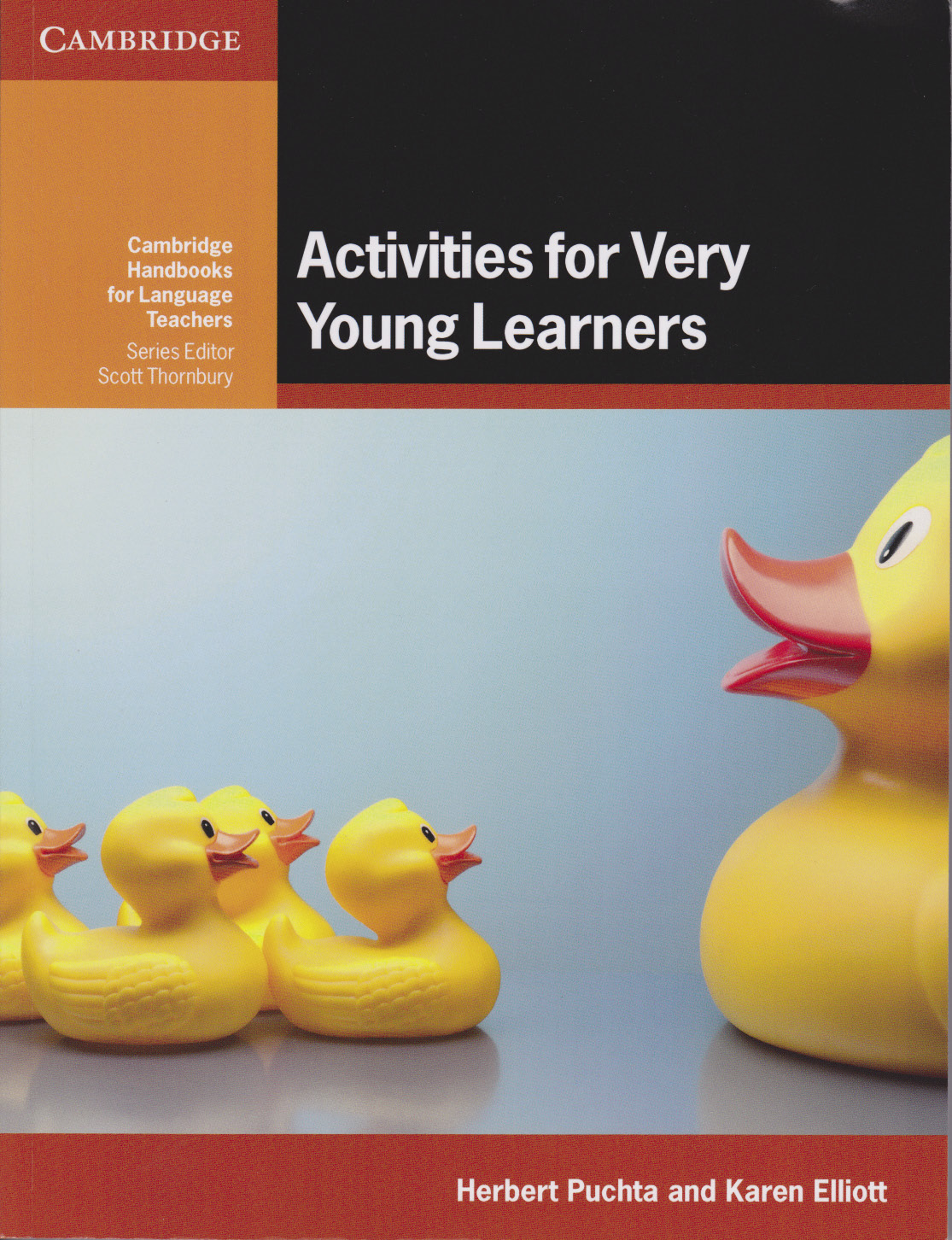Activities for Very Young Learners by Herbert Puchta and Karen Elliott
Activities for Very Young Learners
by Herbert Puchta and Karen Elliott
CUP 2017
978-1-316-62273-5

I want to start this review by saying that I wish I had had this book when I was teaching very young English language learners. I started my teaching career in a private kindergarten in Hong Kong. To say I was unprepared would be an understatement. We had lots of storybooks, but I wasn’t sure how best to use them. When my students went off-task, I didn’t know how to get them back on-task.
At the time, there were virtually no handbooks or resources for English language teachers of very young learners available. Now the situation is improving, but Activities for Very Young Learners, by Herbert Puchta and Karen Elliott, is by far the most comprehensive and informative book that I have come across.
It starts off with a detailed introduction, structured around critical questions that teachers often ask themselves, such as What is the best age for learning another language? and Should very young learners be taught reading and writing in another language? The authors give detailed responses: challenging myths, while offering answers grounded in theory in a reader-friendly format. After this informative introduction, there is a short section entitled ‘Tips for teaching young learners’. Here, you will find some basic advice on lesson planning, ways to start a lesson, things you’ll need in the classroom (the teacher’s toolkit), classroom management, using picture books, organising and giving instructions and observation techniques, among others. A good tip that drew my attention was to keep a continuous record of your children’s English language performance and make observation notes during class. Often, we are busy and forget to do this, but good observation notes can really help us tune our lessons to meet our learners’ needs.
The rest of the book is divided up into eight chapters based on different kinds of activities suitable for young learners:
- Classroom routines and classroom management
- Movement and games
- Songs, chants and rhymes for topics
- Stories and storytelling
- Arts, crafts and displays
- Exploring the world
- Thinking-based activities
- Pronunciation and early literacy
Each of these chapters starts with a brief introduction to the topic, and the rest of the chapter is made up of easy-to-follow activity plans. These give the language focus, target age of the learners, time requirements, materials needed, preparations, procedures and possible variations. They give ideas for individual lessons and could even help teachers start to structure a syllabus for their young learners.
One chapter I particularly enjoyed was ‘Stories and storytelling’. I’m very passionate about the use of stories and storytelling with young learners. Through storytelling, we can really engage our learners and create a shared experience. The authors give some great ideas on how you can utilise some classic storybooks, such as Are You My Mummy? and The Enormous Turnip. These activities are not only great for language learning, but also teach other important life lessons, such as helping others and sharing.
The book also comes with some ready-to-use photocopiable resources. Additional resources, including recordings of the chants featured in the book and further photocopiable materials, are available on the publisher’s website (each book comes with a unique access code).
This book should be on the bookshelves of every kindergarten, school or centre that caters for very young English language learners. It is full of inspiring ideas and practical suggestions.
Benjamin Moorhouse, Hong Kong
Comments
Write a Comment
Comment Submitted